Unlock the power of knowledge management with our comprehensive guide on how to build a knowledge base. From essential strategies to customizable templates, this article equips you with the tools to create an effective repository of information. With 92% expressing their willingness to utilize a knowledge base for self-service support when available, now is the time to harness its potential for your organization’s growth and efficiency.
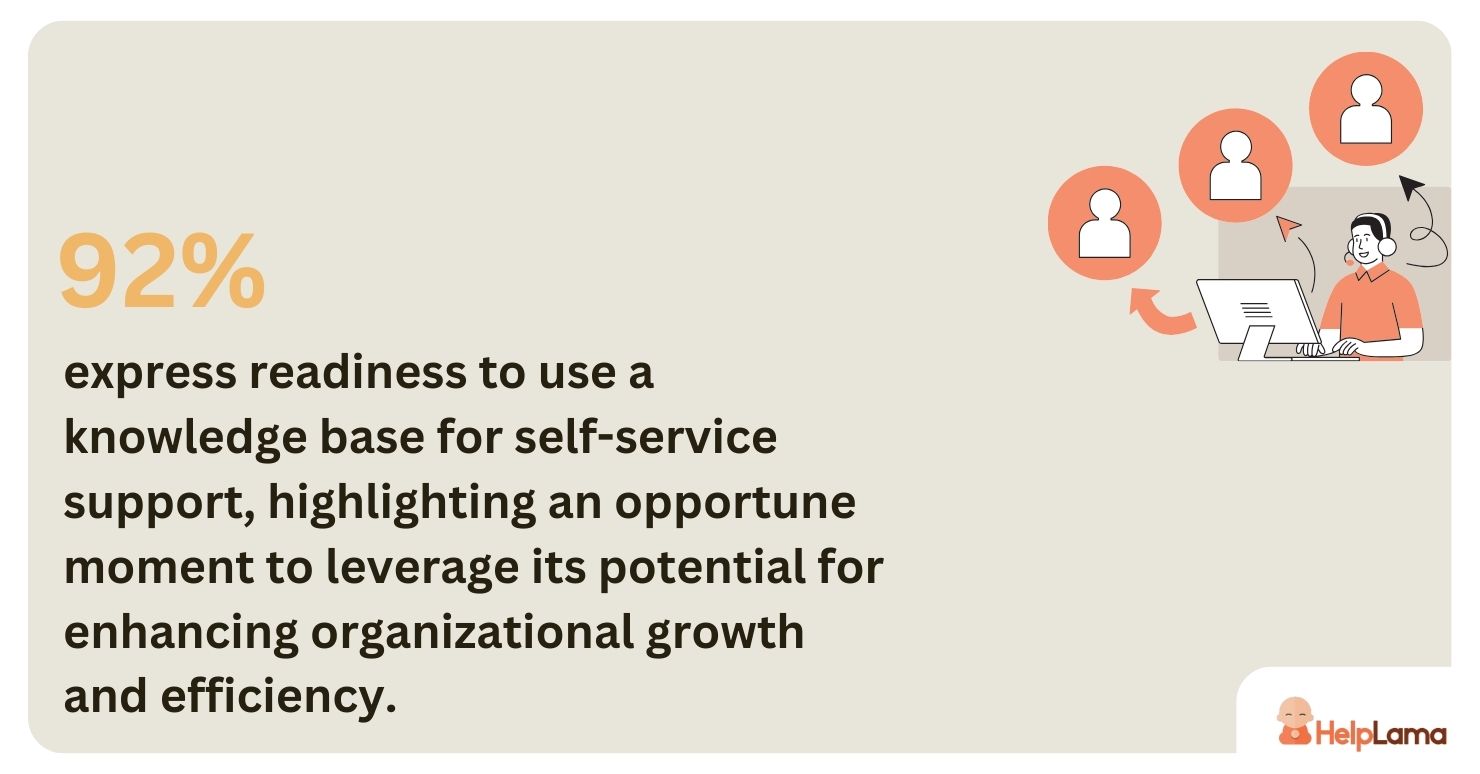
What Is A Knowledge Base?
A knowledge base is a self-serve customer service library, resembling an easily navigable repository. It encompasses information about products, services, or topics, empowering customers to resolve issues independently.
It exists in two primary forms: machine-readable and human-readable. Machine-readable bases employ data analyzed solely by AI systems, offering less interactivity. In contrast, human-readable bases store documents accessible to humans, fostering greater interaction despite requiring more time for solution acquisition.
Why Is A Knowledge Base Essential?
Investing resources into creating an online knowledge base significantly benefits your organization. Here are several compelling reasons:
- Boosted Productivity: Employees save time accessing information, enhancing task efficiency.
- Relieved Customer Support: Automation of routine inquiries frees up support agents for more complex issues.
- Improved Customer Satisfaction: Self-service options reduce reliance on support for basic queries, fostering loyalty.
- Efficient Onboarding: New hires quickly grasp company operations and culture through a comprehensive knowledge base.
- 24/7 Support Availability: Global customers receive prompt assistance across time zones.
- Elevated Morale: Automation allows employees to focus on fulfilling tasks, complementing human interaction for efficient support delivery.
How To Create A Knowledge Base
Setting up a knowledge base is straightforward. Follow these simple steps when building one, and you’ll effectively provide value for your customers.
Step 1: Determining The Purpose/Need Of Your Knowledge Base
When considering how to build a knowledge base, start by defining its purpose. According to a study by HubSpot, 75% of customers expect a consistent experience across multiple channels, highlighting the importance of clarity in your knowledge base’s objectives. Determine whether it will serve your customers or employees and specify if it’s meant to enhance product understanding, provide tutorials, or address FAQs.

Once your target audience is identified, focus on identifying existing knowledge gaps that justify the need for a knowledge base.
- Consider the most common customer inquiries and topics.
- Evaluate if your support team faces frequent information requests.
- Analyze the current response time of your support team, and monitor any increase.
- Identify team members whose departure could lead to knowledge gaps within the organization.
Step 2: Establishing The Core Components Of Your Knowledge Base
Investing in proper knowledge base software ensures that essential core elements are readily available. Designing a knowledge base from scratch is unnecessary as the software provides pre-packaged templates for immediate use. The setup process involves simply configuring the knowledge base and adding content.
Key components that should be included in every knowledge base are:
- FAQ Section: This section should contain a list of commonly asked questions arranged in alphabetical order.
- Search Bar: A search bar facilitates easy navigation for customers who already have a specific topic in mind, providing predictive suggestions and generating relevant results.
- Contact Support: Including a direct link to customer support ensures that users can quickly seek assistance when needed.
The specific core elements required for your knowledge base may vary depending on your company’s needs. For instance, you may consider incorporating a “most read articles” widget on the homepage or a “related articles” section at the end of each article, accompanied by a feedback form. Additionally, integrating a live chat app can enhance accessibility for customers seeking immediate assistance.
Ultimately, the setup of your knowledge base should prioritize customer-centricity and align with your company’s objectives.
Step 3: Establishing The Framework For Your Knowledge Base
Ensure your knowledge base serves its purpose beyond mere information storage; usability is paramount. Constructing a well-thought-out knowledge base structure facilitates content organization and seamless navigation for users. Various innovative approaches exist for structuring your knowledge base, with one effective method being tailored to your intended audience.
For instance, if you’re developing an internal knowledge base, consider structuring it around specific audience segments:
- Organizational knowledge
- New employee onboarding
- Human Resources
- Marketing
- Sales
- Customer Support
- Product
- Design
- Engineering
When crafting your customer service knowledge base, prioritize clarity and accessibility. A haphazard arrangement of articles only frustrates users attempting to locate information. Design the structure with your users in mind, creating categories that house individual articles. Categories can be organized by product type, user actions, or any other relevant criteria.
Consider organizing categories based on user roles (e.g., beginner, advanced, expert) or their stage in the user journey (e.g., Getting Started, Upgrading Account, Product Tutorials).
Step 4: Crafting Content for Your Knowledge Base
Once you’ve organized your knowledge base, it’s crucial to carefully consider the topics you plan to cover and start gathering information.
To begin, review your customer support queue for frequently asked questions. Take note of any standard responses frequently used by support agents and consider using them as potential topics for your knowledge base.
Next, engage in discussions with your support team to determine which topics they believe should be documented. Additionally, solicit input from the sales and marketing departments regarding common inquiries from potential customers.
Create a comprehensive list of topics in a spreadsheet, and identify any subject matter experts needed for content creation. Document existing content and pinpoint areas that require further development to fill any gaps.
Step 5: Organize Knowledge Base Content
After refining your content, the next crucial step is to arrange it into categories. This means assigning an appropriate category to each piece of content, ensuring it fits neatly within the framework of your knowledge base.
You can also create subcategories to make navigation smoother, allowing for up to 6 levels of categorization. However, it’s essential to steer clear of overly complicated structures, as they might make it difficult for customers to find information efficiently.
Step 6: Write New Articles For Your Knowledge Base
When it comes to crafting knowledge base articles, the key is to create content that is both informative and user-friendly. Unlike blog posts or novels, documentation should prioritize clarity, conciseness, and easy navigation.
Title Structure
When writing articles for your knowledge base, it’s important to carefully consider the title. Users typically search using simple terms, so avoid excessive jargon. Opt for action-oriented titles such as “How to…” or “Using…” to align with customers’ search habits.
Content Tone
Maintain a straightforward tone throughout your articles to cater to readers with varying levels of expertise in the subject matter.
Paragraphs
Keep paragraphs brief, consisting of no more than two or three sentences each. This facilitates easy skimming and helps users quickly locate the information they need.
Links
Rather than repetitively explaining concepts, incorporate links to related articles within the content to provide additional context for interested users.
Highlighting with Bold and Italics
Use bold and italics sparingly to emphasize critical points. Call-outs can effectively draw attention to essential information without overwhelming the reader.
Bullet Points and Lists
Structure procedural steps using bullet points and lists to improve readability and clarity.
Adding Visuals
Supplement written content with images and informative videos to break up text and enhance user engagement.
Proofread
Before publishing, thoroughly proofread your articles to ensure accuracy and clarity. Consider having a colleague review the content for an additional layer of scrutiny.
Step 7: Optimize Your Knowledge Base For SEO
Ensuring your knowledge base is readily discoverable by search engines such as Google is crucial. According to a study, 75% of users never scroll past the first page of search results, highlighting the importance of high search engine visibility. This enhances the chances of prospective customers locating valuable information about your business while browsing online.
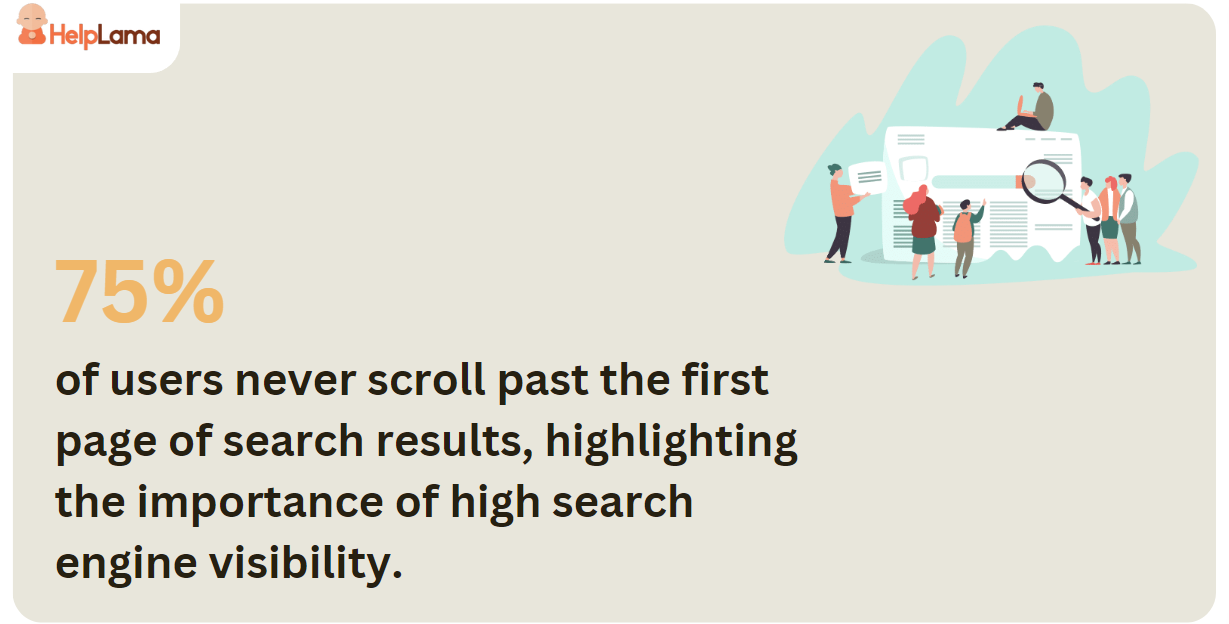
Indexing your knowledge base enables it to draw in new customers who may encounter your brand for the first time, providing an opportunity to make a favorable impression.
For optimal search engine visibility, integrate pertinent keywords into your article URLs and meta descriptions. Many knowledge base software options provide SEO settings for tailoring to your needs. If privacy is a consideration, you can deactivate indexing to restrict public access to your knowledge base.
Step 8: Publish Your Knowledge Base
It’s time to launch your knowledge base. Before launching your knowledge base, consider:
- Domain/Subdomain: Choose between a separate domain, subdomain, or a folder on your main site. Examples include help.mycompany.com or mycompany.com/help.
- Integrations: Opt for knowledge base software that integrates with popular apps like help desks, live chat, and analytics. This enhances functionality and allows seamless documentation creation within existing workflows.
- User Access Levels: Determine who can edit, read, or have write-only access to your documentation. Setting user access levels ensures security against unauthorized changes.
After addressing these points, launch your knowledge base. Remember, it’s a continuous project requiring updates and improvements.
Step 9: Gather Feedback And Improve
Begin collecting feedback on your content once you’ve established your knowledge base. Use the knowledge base software’s built-in analytics to assess content performance and identify areas for development.
Analyze the frequency of searches yielding no results to generate ideas for new content. For articles with notable numbers of negative ratings, undertake revisions for improvement. Respond promptly to customer comments on your knowledge base and implement suggestions to enhance your articles.
Knowledge Base Templates And Examples
You understand the theory and best practices well. Now, let’s examine what constitutes an effective knowledge base. We’ll review some exemplary knowledge base examples.
1) Optimizely
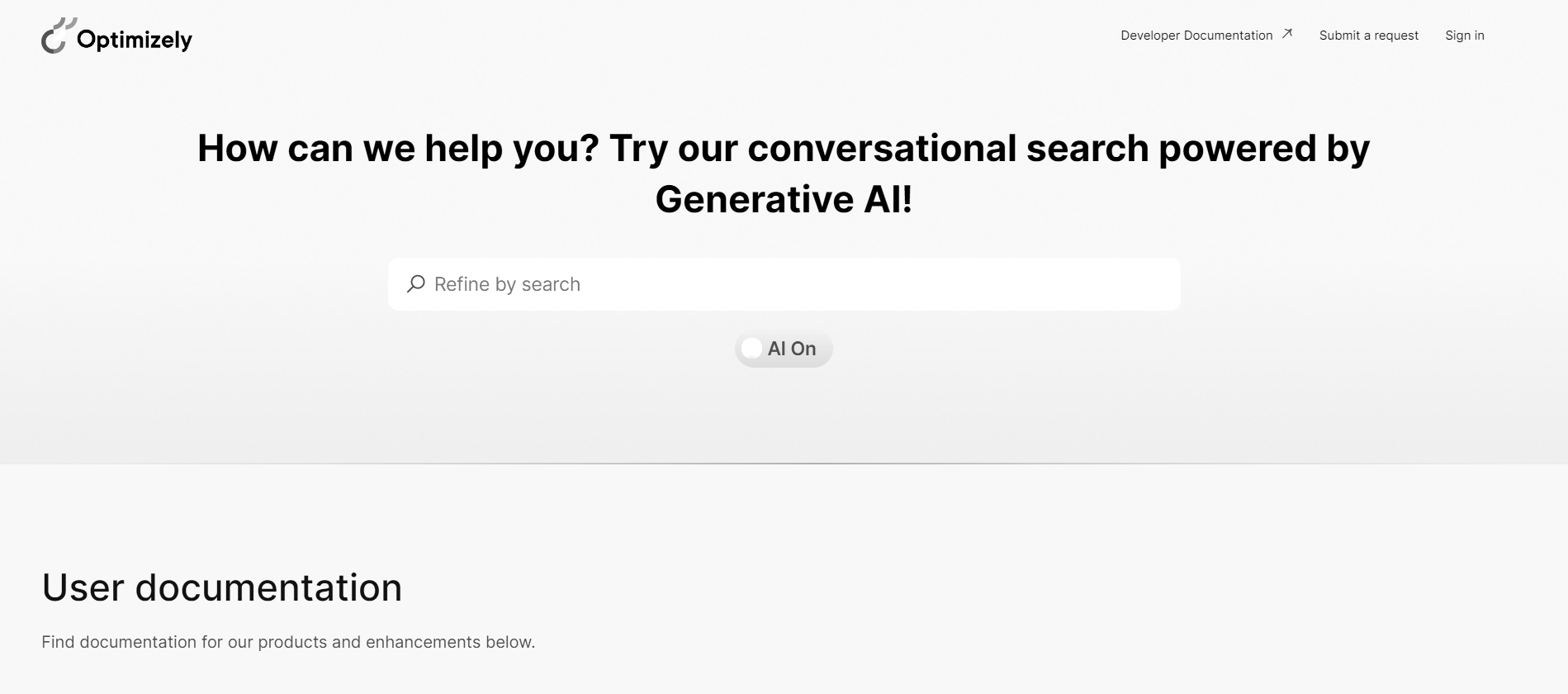
Optimizely’s extensive knowledge base features a community forum, traditional articles, an educational academy, certification programs, developer documentation, and support links. The main elements include left-hand navigation, search, and popular articles.
Upon further exploration, you’ll find a wide range of topics covered. Individual articles, like tutorials, provide comprehensive content with a mix of text, images, and video. They also link to other helpful sources, aiding users in finding solutions to related issues.
2) SurveyMonkey
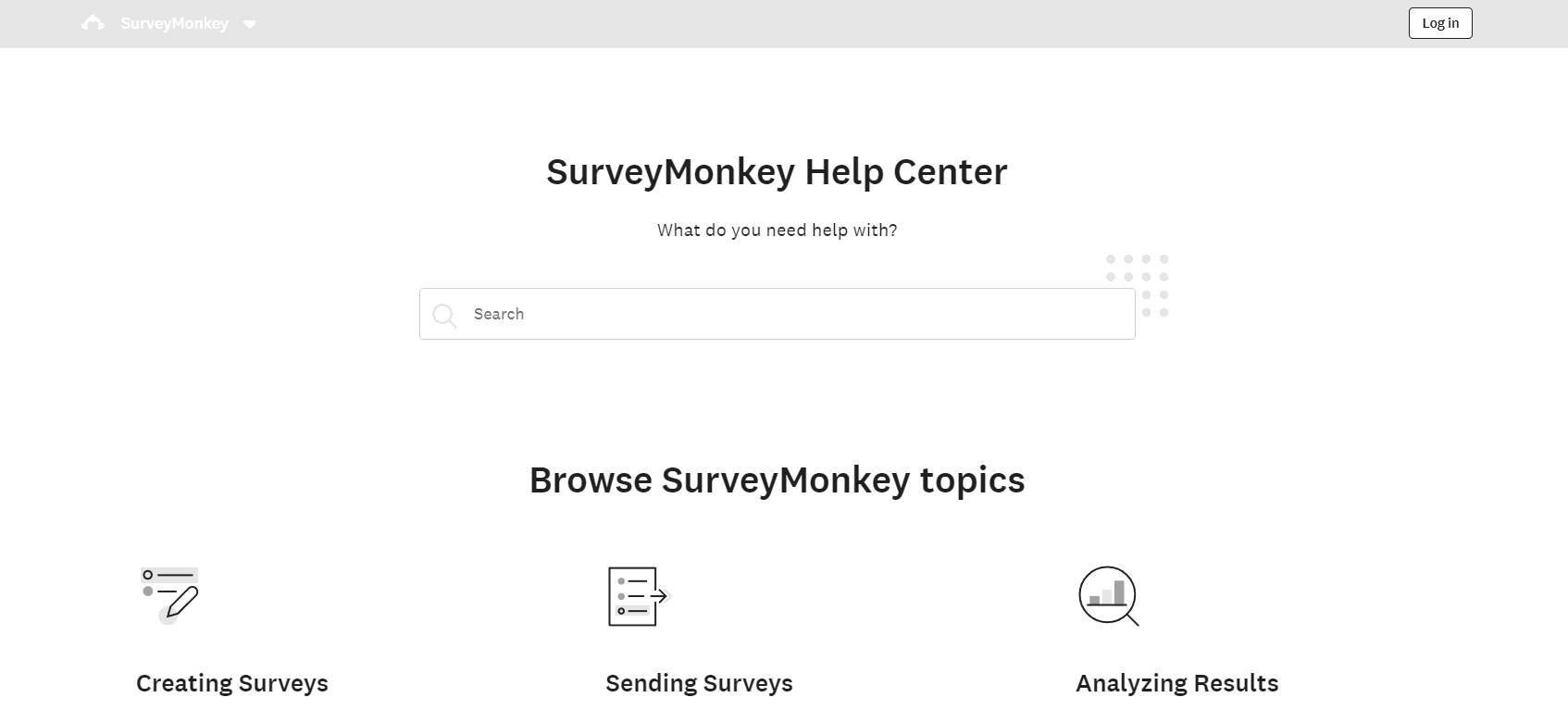
SurveyMonkey’s knowledge base design template stands out as exemplary. Its simplicity, intuitiveness, and clear categorization facilitate efficient navigation. The prominent search bar yields relevant results, with browsing options available.
Autocomplete aids in anticipating user queries. Upon accessing articles, users benefit from clear categorization and breadcrumb navigation. Direct links to product features enhance usability. While a feedback mechanism could enhance user experience, optimizing usefulness remains pivotal.
3) Microsoft

This knowledge base example effectively captures and utilizes feedback. Microsoft Excel’s knowledge base is well-developed and user-friendly. It addresses top user concerns and offers training resources. The articles are easy to read, and navigate, and include links to related content. Additionally, users can rate article quality, aiding in continuous improvement.
4) HubSpot
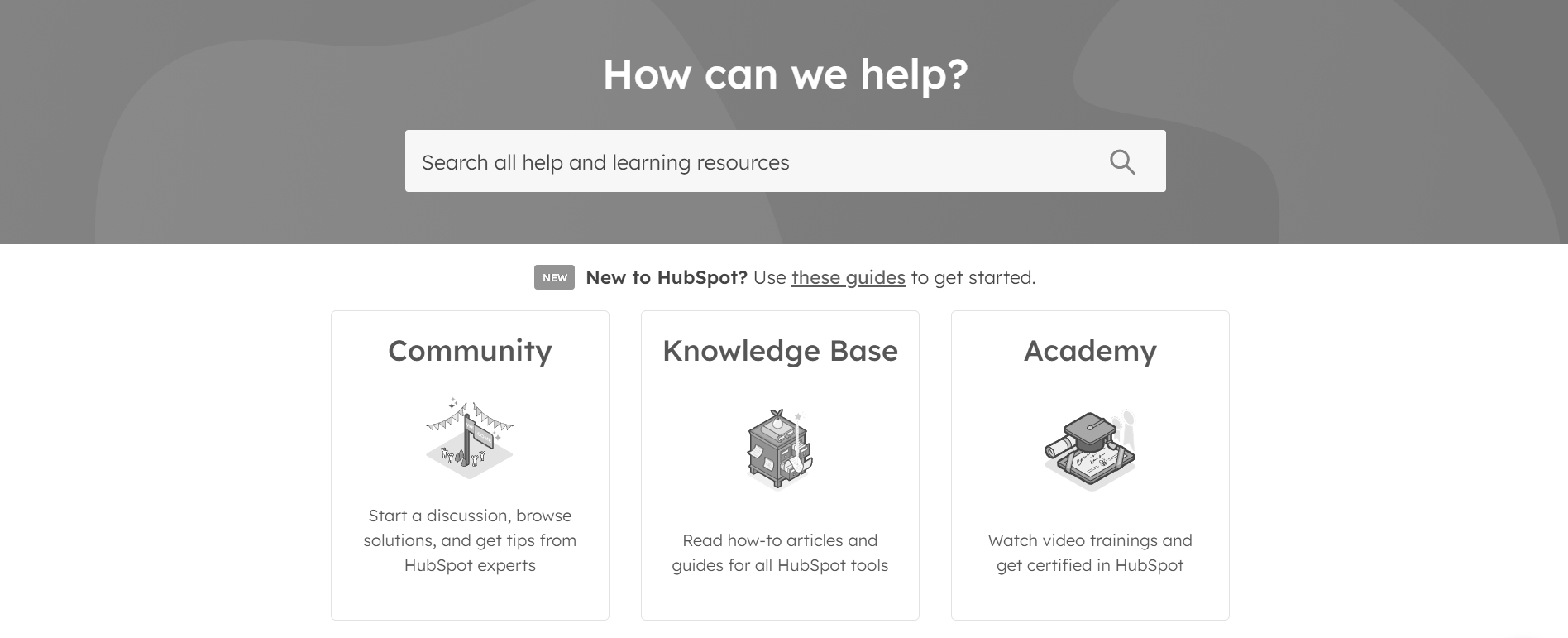
HubSpot prioritizes customer education, providing a comprehensive Help Center with free tools and training resources. Users can access user guides, quick answer documents, user groups, and community discussions in the Knowledge Base section. Additionally, the Help Center directs users to HubSpot Academy for answers, skill enhancement through videos and classroom training, and certification in various topic areas.
5) Canva

Canva’s support page has a clear and organized layout, facilitating easy navigation to find the necessary tools. Articles are categorized under FAQs, with parent categories like payments, pricing, and billing leading to more specific child categories. Additionally, a search bar allows visitors to input keywords for issue resolution, prioritizing the most relevant and popular results for quick solutions.
Best Practices And Tips To Create A Knowledge Base
To effectively build your knowledge base website, adhere to these best practices and tips:
- Study Others: Research competitors’ knowledge bases for insights.
- Collect Feedback: Gather customer input for continuous improvement.
- Regular Audits: Keep content fresh with scheduled reviews.
- User-Centric Design: Ensure accessibility and seamless navigation.
- Choose Software Wisely: Opt for suitable platforms.
- Team Collaboration: Engage support staff in content creation.
- Streamline Support Access: Prioritize direct customer communication channels.
Also Read: 11 Best AI Knowledge Base You Need To Know!
Saufter.io: A Modern Take On Knowledge Base Solutions
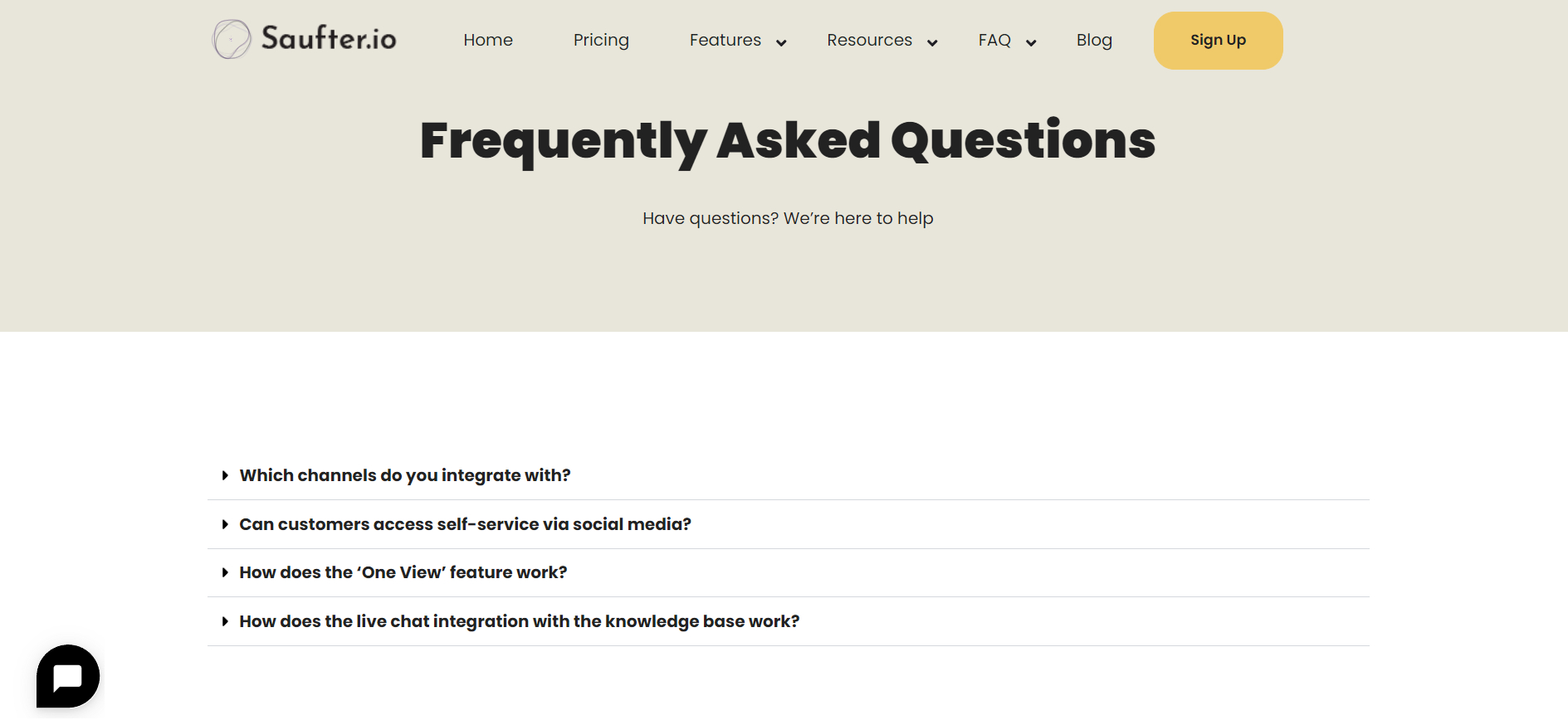
Saufter.io is a competitive player in the knowledge base software market, prioritizing efficient information management and user empowerment.
Key Features
- Simplicity: Saufter.io offers an intuitive interface, requiring minimal training even for non-technical users.
- Centralization: All knowledge base articles, FAQs, and resources are consolidated for easy access by internal and external teams.
- Powerful Search: Users can swiftly find information through Saufter.io’s robust search functionality.
- Customization: The platform can be tailored to match brand identity and specific organizational needs.
Saufter.io offers AI-powered chatbots, live chat integration, multi-channel communication, and performance analytics. Ideal for businesses desiring an easy-to-use knowledge base with centralized information management, AI automation, and diverse support channel integration.
Conclusion
In conclusion, crafting a robust knowledge base requires a systematic approach outlined in this guide. By following the templates provided and leveraging effective organization techniques, individuals and organizations can efficiently construct a repository of essential information.
Saufter.io presents a compelling option for businesses seeking to build user-friendly knowledge bases, offering simplicity, customization, and AI-powered features.
With a 15-day free trial, Saufter.io provides a modern approach to knowledge management that enhances productivity and fosters continuous learning.
















